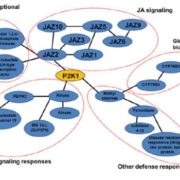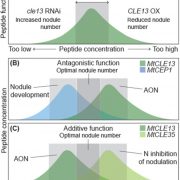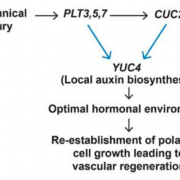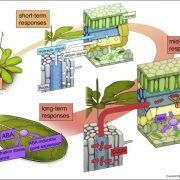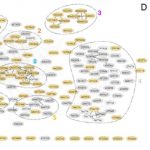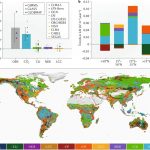AuxSen: a biosensor for direct visualization of auxin (bioRxiv)
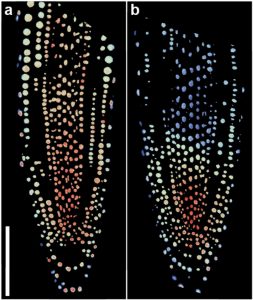 Auxins participate in nearly every aspect of plants’ life cycle, but the information about the actual distribution of this hormone is scarce. The location of the hormone has been inferred using reporters based on auxin-transcriptional responses or auxin-dependent degradation signals. For a direct visualization, Herud-Sikimic and colleagues developed AuxSen: a genetically encoded, reversible biosensor for in vivo imaging of auxin distribution. The authors exploited the structural similarities between indole-3-acetic acid (IAA) and tryptophan. They started from the bacterial tryptophan repressor (TrpR), a tryptophan-binding protein. To increase the specificity of IAA binding and abolishing TRP binding, they generated about 2,000 TrpR variants, and they tested fluorophore and linker combinations to improve the FRET readout. In vitro, the FRET ratio of AuxSen changed upon treatment with IAA. For in vivo analyses, the authors expressed the sensor in protoplasts; the FRET ratio increased proportionally to auxin levels. Additionally, the authors measured the perturbation of auxin caused by inhibition of auxin transport (treatments with NPA and BFA). Two important features of this sensor are: AuxSen expression did not interfere with auxin signaling and its auxin-binding reversibility. With this, mapping of auxin dynamics and concentrations at high cellular resolution is now possible. (Summary by Humberto Herrera-Ubaldo) bioRxiv 10.1101/2020.01.19.911735
Auxins participate in nearly every aspect of plants’ life cycle, but the information about the actual distribution of this hormone is scarce. The location of the hormone has been inferred using reporters based on auxin-transcriptional responses or auxin-dependent degradation signals. For a direct visualization, Herud-Sikimic and colleagues developed AuxSen: a genetically encoded, reversible biosensor for in vivo imaging of auxin distribution. The authors exploited the structural similarities between indole-3-acetic acid (IAA) and tryptophan. They started from the bacterial tryptophan repressor (TrpR), a tryptophan-binding protein. To increase the specificity of IAA binding and abolishing TRP binding, they generated about 2,000 TrpR variants, and they tested fluorophore and linker combinations to improve the FRET readout. In vitro, the FRET ratio of AuxSen changed upon treatment with IAA. For in vivo analyses, the authors expressed the sensor in protoplasts; the FRET ratio increased proportionally to auxin levels. Additionally, the authors measured the perturbation of auxin caused by inhibition of auxin transport (treatments with NPA and BFA). Two important features of this sensor are: AuxSen expression did not interfere with auxin signaling and its auxin-binding reversibility. With this, mapping of auxin dynamics and concentrations at high cellular resolution is now possible. (Summary by Humberto Herrera-Ubaldo) bioRxiv 10.1101/2020.01.19.911735



